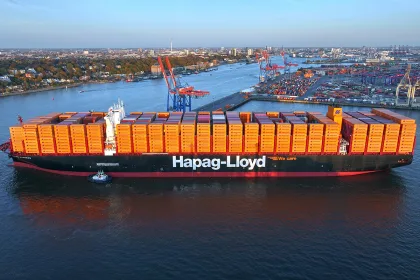SPEARHEADING LOGISTICAL SYNERGY
Implementing sustainable operating practices and innovative approaches to material movement allows the logistics arm of the organization to service customers in the most efficient manner and reduce its carbon footprint.
This makes the Transportation and Logistics Division one of the key providers for JDI, moving forest products by road and rail between operations to the market.

SIGNIFICANCE OF THE SUPPLY CHAIN
Globally, the transportation and logistics sector has consistently been recognized as a vital piece of the supply chain.
Therefore, this specialized division of JDI keeps its supply chains intact, providing customers with competitive price points so that its internal businesses can remain sustainable.
“At JDI, we believe we have the potential to be better every day and know we can be a part of the solutions to some of today’s most pressing challenges,” Fisher highlights.
One difficulty that the company has overcome is the consequences of the COVID-19 pandemic, which had a major impact on the global supply of goods and services.
“Over the past few years, many people have seen first-hand what happens when the supply chain is interrupted; the COVID-19 pandemic demonstrated the significance of a strong supply chain. For many in Canada particularly, a new appreciation was found for the supply chain and what it involves,” he recalls.
This is particularly apparent given that the industry is responsible for moving goods across the country and the world; as such, interruptions and changes can have a major impact.
Moreover, Fisher has witnessed a new appreciation for the industry, alongside a greater public understanding of how global events can have local impacts.

IMPROVING ENVIRONMENTAL EFFICIENCY
The Transportation and Logistics Division of JDI is also taking significant steps to improve efficiency by reducing the environmental footprint of its largest assets.
In the fall of 2022, the Atlantic Shrike, an offshore supply vessel, successfully completed a series of sea trials off the coast of Newfoundland, powered solely by an energy storage system (ESS).
The Atlantic Shrike demonstrated an ability to not only transit with zero emissions, but also operate as a hybrid vessel while undertaking dynamic positioning.
“The highlight of the trial was the ESS taking over the full load of the ship, including propulsion, for approximately 30 minutes and sailing at seven knots, making the Atlantic Shrike capable of zero-emission transit for short periods of time,” Fisher expresses.
The division’s improvements have reduced the ship’s emissions by up to 800 tons (t) of CO2 per year. Meanwhile, the vessel’s existing dynamic positioning and automation systems, as well as ventilation and freshwater cooling, were modified to accommodate the large-scale ESS, a containerized module measuring over 37 feet in length and weighing over 40 t.

Moreover, extensive research was completed to ensure optimization in terms of operation and safety, including a robust firefighting system of water mist protection and inert gas deployment.
This project represents a business-wide effort to make a change to the industry.
“More than ever, our stakeholders, customers, employees, and communities demand environmental accountability and responsibility.

In the Transportation and Logistics Division, we are working to create a culture of sustainability around our climate, people, and innovation. By optimizing our fuel costs and expenditure, we can both reduce our carbon footprint and invest more in our people.
Andrew Fisher, Group Vice President, J.D. Irving Limited
The company and its team are proud members of JDI, an organization that has planted one billion trees to date.
“Together, we strive to make a positive difference in our communities, prioritizing social, corporate, and environmental sustainability,” he concludes.
































